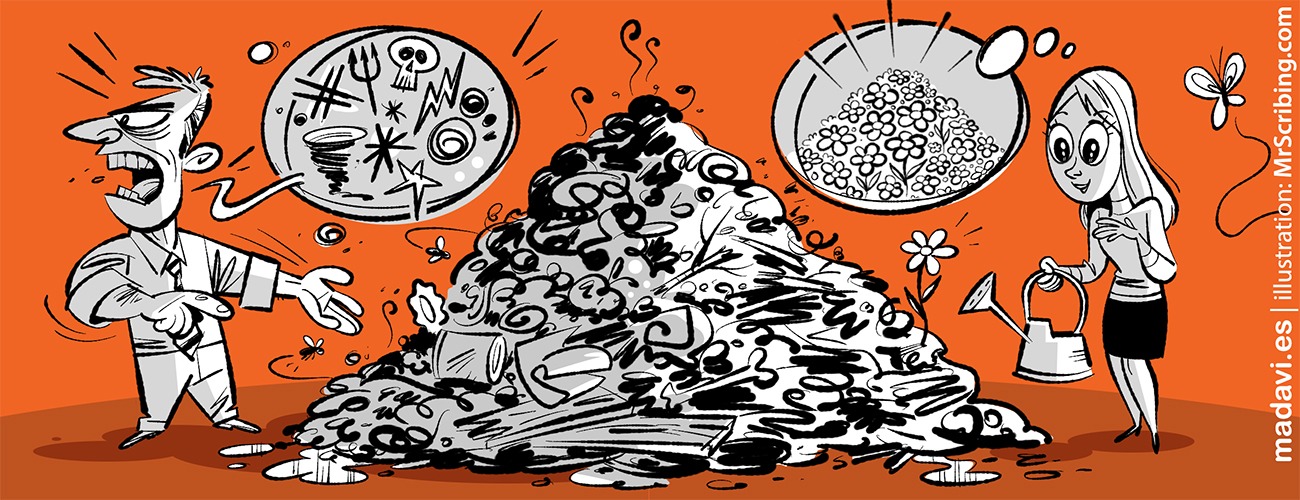Strengths offer us a different paradigm for cultural change. For decades, we’ve treated organizations as if they were broken machines: parts that don’t fit, processes that stall, people who don’t measure up. Under this logic, many companies are trapped in a perpetual cycle of diagnosis and repair. Consultants are hired, structures reorganized, manuals rewritten. The message is clear: something is broken, and it needs fixing.
But what if your company isn’t broken? What if, instead of searching for what’s not working, we started by identifying what is—even if it’s small or marginal? What if we moved away from a “trial and error” paradigm toward one of “trial and success”? What if we viewed organizations as living systems full of untapped resources, talent, and energy waiting to be discovered and empowered?
The idea of transformation through strengths isn’t utopian. It’s an invitation to shift our focus: from fixing to activating, from correcting weaknesses to amplifying strengths, from external control to internal empowerment.
Change through strengths: subtle yet profound
Most organizational methodologies are built on a “trial and error” logic: try something, measure results, learn from mistakes, and adjust. But this has a significant side effect: it trains organizations to focus on mistakes and what’s gone wrong.
Conversely, the “trial and success” approach suggests the opposite: paying attention to what actually worked—even if it was just a small spark amidst chaos. Rather than dismissing it as anecdotal, these successes become starting points for scaling up. This cultivates a culture that doesn’t merely tolerate mistakes, but celebrates successes and learns from them.
This approach requires a different sensitivity: an openness to see success patterns where others see only exceptions or luck. It means asking questions like:
- What did we do right this time?
- Why did it work?
- What resources did we mobilize?
- How can we replicate or amplify this?
Organizational learning becomes constructive rather than punitive. Most importantly, it builds a narrative of trust and possibility within teams.
Discovering potential and strengths, rather than fixing faults
An organization is far more than its formal structure. It consists of people who, every day, face challenges, solve problems, collaborate, improvise, and create value. Yet, these actions often go unnoticed because they aren’t captured by traditional metrics.
Frequently, what needs to be uncovered isn’t a technical flaw, but hidden strengths.
When viewing a company through its potential, powerful questions emerge:
- What are our most inspiring success stories?
- What do we naturally do well?
- Where can we feel energy within our team?
A company doesn’t need fixing because it already works. It just hasn’t focused enough attention on what functions smoothly. Shifting focus transforms internal culture: from scarcity to abundance, from deficits to possibilities, from control to empowerment.
Is it garbage or COMPOST? When we pay attention to the good, we always find plenty! That’s why Abundance is one of Madavi’s core principles in achieving our goal: transforming organizational culture and business. Fernando Iglesias, CEO of Madavi, explains it in this video:
Empowerment through strengths
Empowering isn’t about external motivation. It’s recognizing and activating the power already present within the organization. It means changing the narrative from dependence to autonomy, trusting that team members already have the answers, energy, and creativity necessary to build a better future.
How is this achieved in practice?
1. Giving everyone a voice
Promoting horizontal conversations where everyone contributes their experience. Often, the most innovative ideas come from those closest to the customer or product.
2. Highlighting small achievements
Don’t wait for the “big win”. Every success, no matter how small, is a seed. Celebrating it reinforces collective confidence and proves that impactful change can emerge from everyday activities. Learn from small victories and build upon them.
3. Encouraging purposeful experimentation
Allow people to experiment with new ways of working without fear of failure. Crucially, guide them toward focusing on what works to build on that.
4. Abundance mindset: Work with what’s already available and amplify its impact.
5. Collective growth: Focus efforts on areas where teams already excel, fostering trust and motivation.
If you’d like to learn more about Madavi’s strengths-based approach, contact our team:
A new way of viewing organizations
This paradigm shift isn’t merely a new management model. It’s a fundamentally different way of seeing—a new corporate culture. And it all begins with a vital question: What is alive here?
When you look at your organization with eyes of possibility, you begin seeing what was hidden before: quiet creativity, spontaneous collaboration, daily resilience. These aren’t just nice anecdotes; they’re the heartbeat of your company.
Your company doesn’t need fixing. It needs listening, observation, and accompaniment. Because wisdom, capability, and talent already reside within it. The only thing required is shifting the gaze—from mistakes to successes, problems to potential, external intervention to internal empowerment.
Only then will we build organizations that are vibrant, human, and sustainable—and, most importantly, organizations recognizing themselves as sources of their own transformation.



